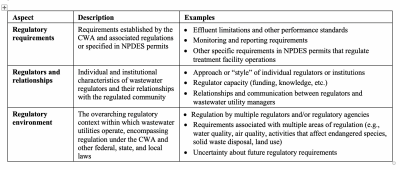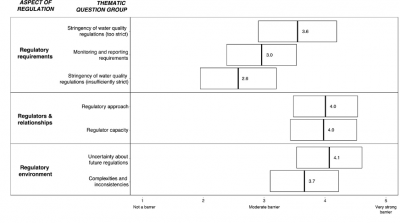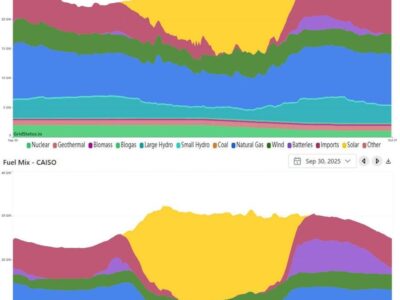Understanding wastewater utility views on innovation and regulation
by Luke Sherman, Alida Cantor, Anita Milman, and Michael Kiparsky
The same underlying technology has been used in the municipal wastewater sector for 100 years. New technologies that treat effluent more efficiently and effectively exist, yet deployment of those technologies has been slow. The limited adoption of new technologies in the wastewater sector raises questions about how to encourage innovation.
Popular narratives around innovation sometimes focus on an individual innovator, an Elon Musk-ian figure with the ability to envision future technology applications others cannot see. However, this narrative may not reflect the dominant dynamics that gate progress in the wastewater sector.
The relationship between regulation and innovation is one of a range of factors that may explain the overall conservative decision-making by utility managers on technology innovation. In a new research article, we report on a detailed survey of utility managers about their views on regulation and innovation.
We first disentangle the concept of regulation. We conceptualize regulation as several interrelated dimensions, each of which can serve as a barrier or a potential encouraging factor for innovation: regulatory requirements, regulators and relationships, and the regulatory environment (Table 1).

Survey respondents identified factors related to the ‘regulatory relationships’ and the ‘broader regulatory environment’ dimensions as the most important barriers to innovation (Figure 1). Survey responses also indicate that utility managers place a heavy emphasis on the need for collaboration and communication between regulators and the regulated entities.
In practical terms, wastewater utility managers view navigating their relationships with permit writers and working within the broader regulatory context of non-wastewater regulations to be the more significant barriers to implementing new technologies. Perhaps surprisingly, given anecdotal assumptions that the stringency of regulations impedes innovation, utility managers did not think reducing regulatory stringency would do much to encourage innovation. This finding indicates specific effluent parameters may not the primary issue when it comes to innovation: how the process can be efficiently navigated may matter more.

We conclude that there are likely more effective ways to incentivize innovation in the wastewater sector than loosening or tightening of regulatory standards. Rather, building the capacity to navigate the regulatory process in creative ways may be a more promising approach. This will require building technical, managerial, and financial capacity. Crucially, these capacities will need to increase in both the regulated community and their regulators, both of whom must go above and beyond standard procedures to evaluate technologies that by definition involve some risk of failure. Stay tuned for forthcoming work that will add nuance and detail to the observations and conclusions reported here.
For more details, see our new article, available open access:
Luke Sherman, Alida Cantor, Anita Milman, and Michael Kiparsky. 2020. Examining the complex relationship between innovation and regulation through a survey of wastewater utility managers. Journal of Environmental Maangement. 260, 110025. https://doi.org/10.1016/j.jenvman.2019.110025
This is the first in a set of forthcoming publications that examine regulation and innovation in the municipal wastewater sector, funded by US EPA and the NSF ReNUWIt Engineering Research Center. A comparison of utility and regulator perspectives and a select set of innovation case studies are forthcoming.






Reader Comments